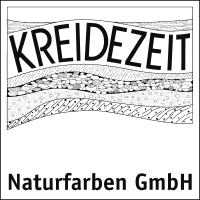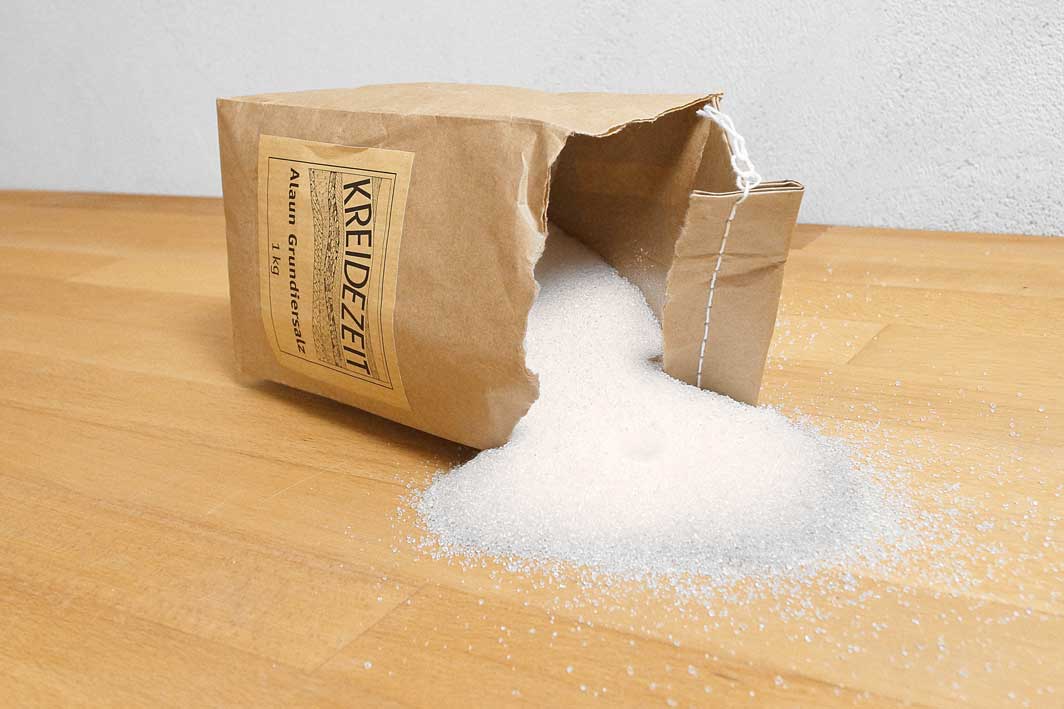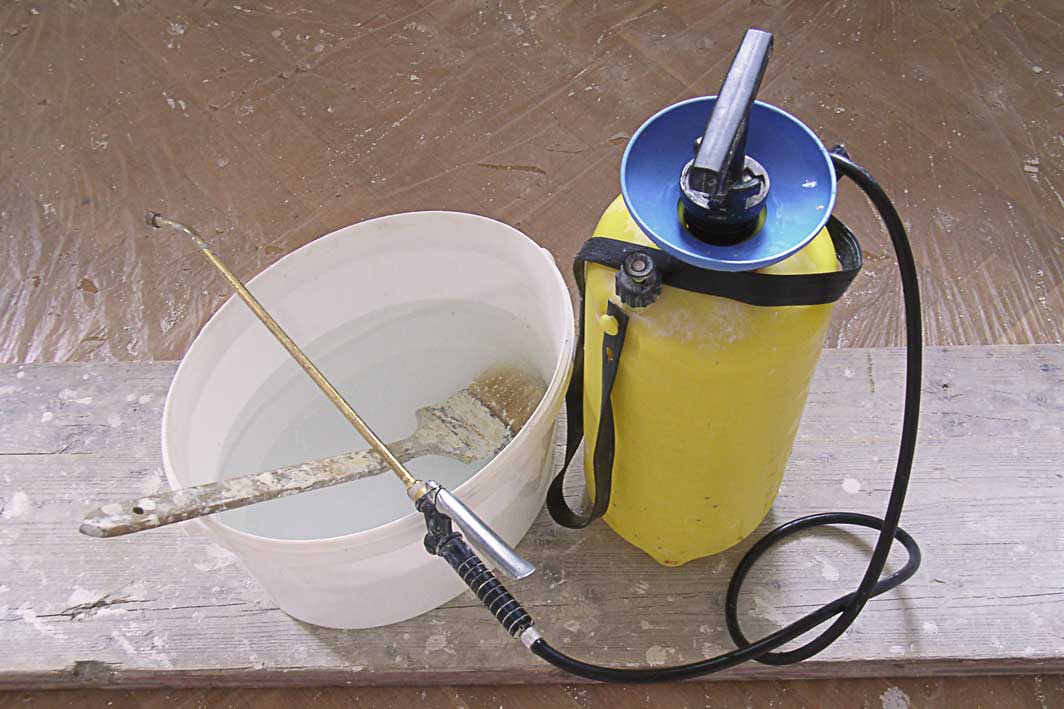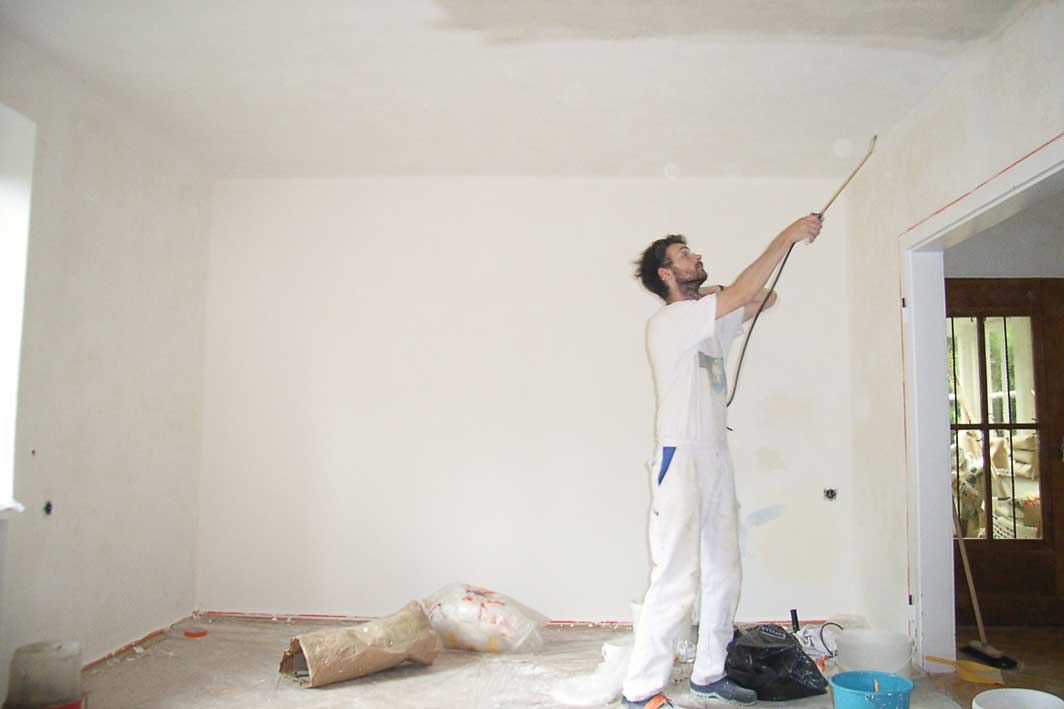Alum – or potassium aluminium sulphate – is a salt which is rather insoluble in cold water and soluble in warm water. It is used, among other things, as a hemostatic agent in razor pins, as a deodorant crystal, as a fixing aid in plant dyeing, as a primer in distemper painting.
In our range of products, Alum Priming Salt is used as a barrier primer against penetrating discolorations and stains from old substrates: Water marks, discolorations from paste residues, etc.
The best results are achieved when applied to new KREIDEZEIT Lime Plasters or new KREIDEZEIT Lime Paints.
The blocking effect of alum is based on a reaction with lime that has not yet set, on the closure of the capillaries of plasters by recrystallization and on its poor solubility in cold water. The faster the next coat dries, the greater the chance of success. On old plasters, alum does not have a significant blocking effect. As a rule, alum does not help against nicotine discoloration.
The lime plasters and lime paints should be treated with alum shortly after drying, the blocking effect is better if the lime has not yet been carbonated.
Then coat with KREIDEZEIT Lime Paints or apply thin layers of KREIDEZEIT Lime Wall Finishes (max. thickness 1-2 mm). After treatment with KREIDEZEIT Casein Primer, can also be painted over with KREIDEZEIT Vega Wallpaint, Clay Paints, or Distemper. Can not be coated with GekkkoSOL paints.
It is not recommended to coat the primed surfaces with thick layers of plasters, the drying time might be too long and the moisture could dissolve the alum and the dyes again.
In contrast to commercially available and usually solvent-based and vapour-tight sealing bases, alum has only a minor effect on the vapour absorption of the substrate.
The success of the application cannot be guaranteed. However, the chances of success are so high that an attempt is worthwhile and depends directly on professional processing.
Before carrying out large-area work, it is recommended that test areas be laid out to check the effectiveness of the alum.
Properties
- Salt for mixing with water
- blocking
- vapour-permeable
- solvent-free and emission-free, odourless
- absorbency reducing
- hardening
- acidic, pH 3-3.5 at 10% solution
- slightly disinfecting
- vegan
Full Declaration
100 % potassium aluminium sulphate x 12 H2O





